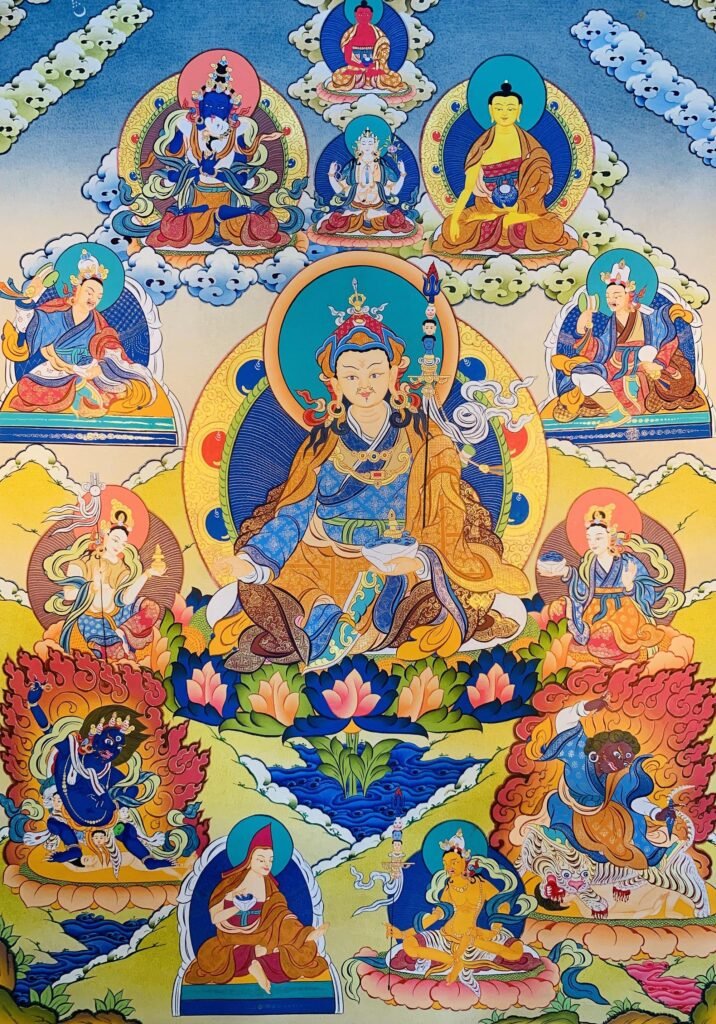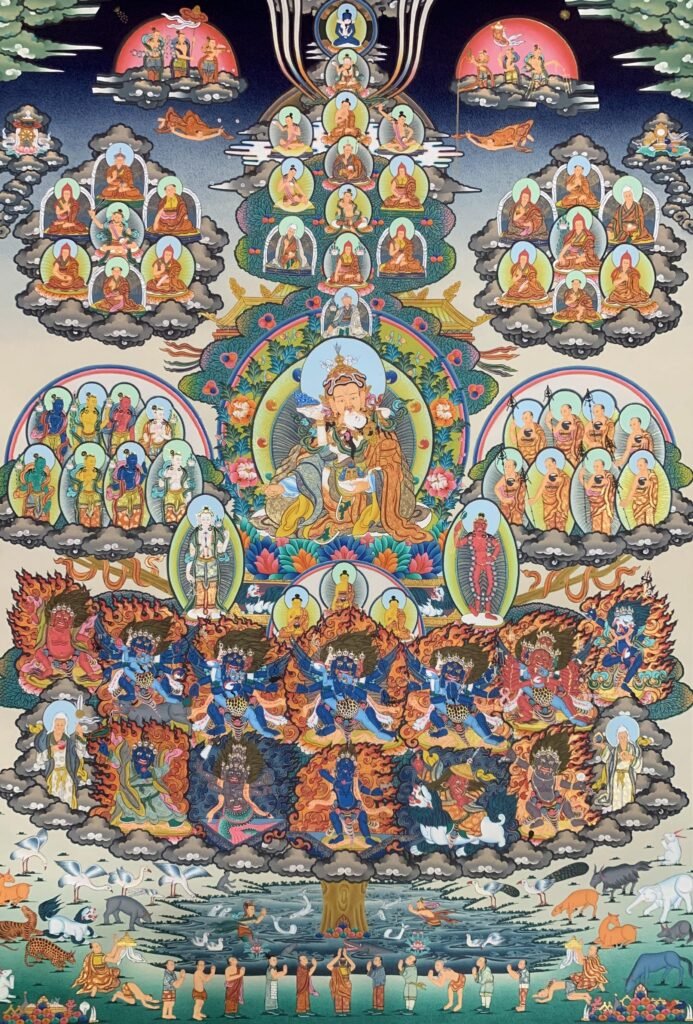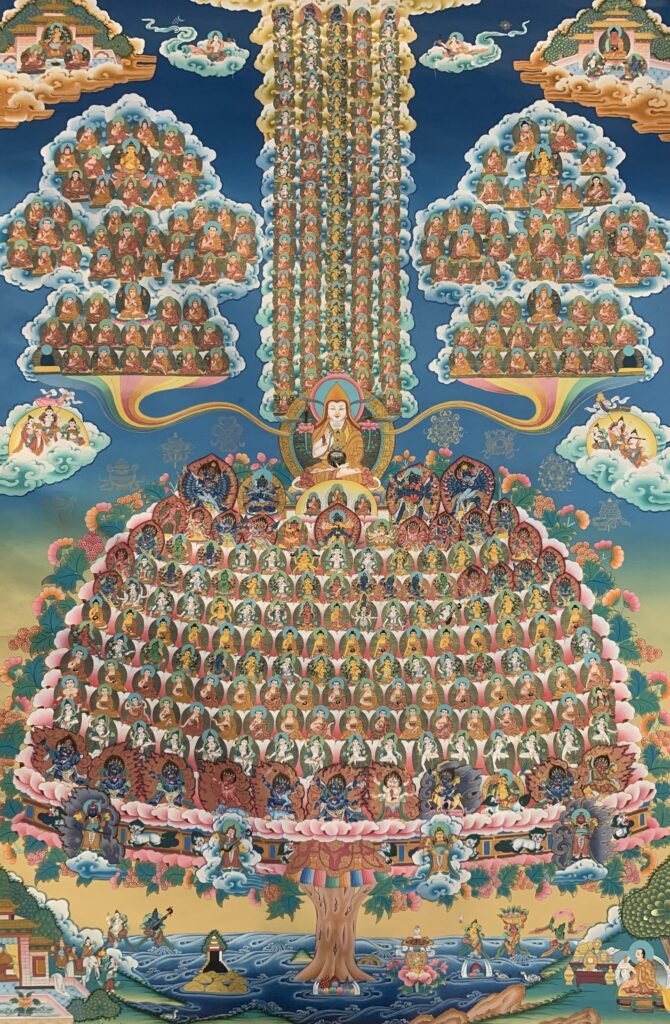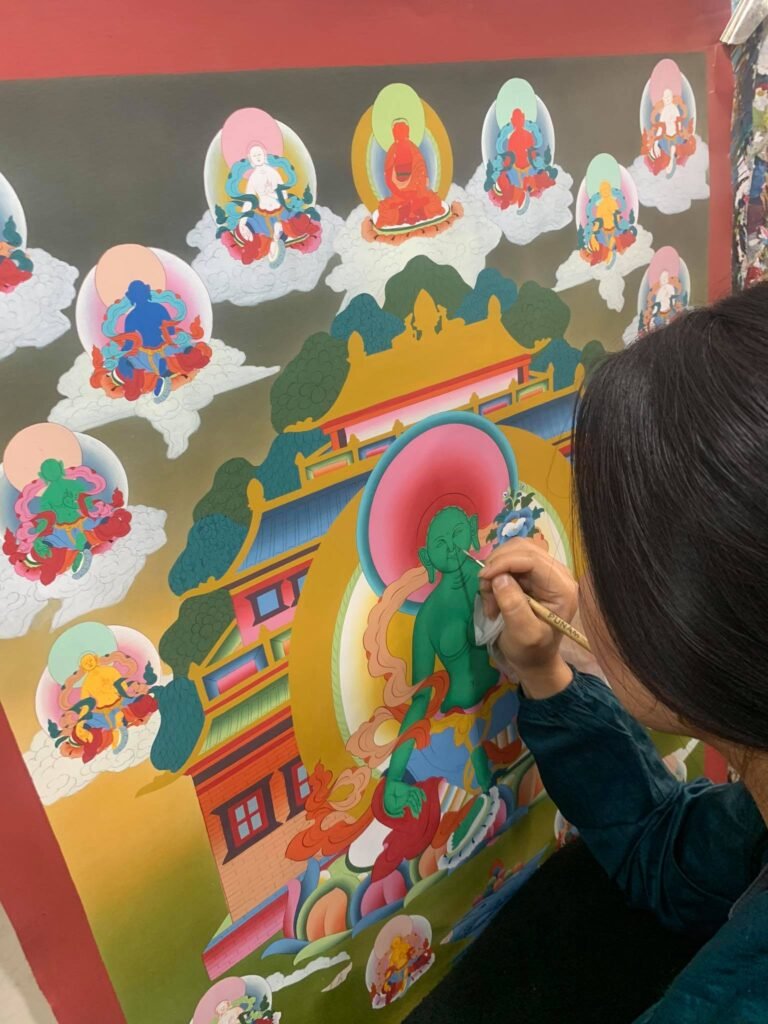Yama (lord of death)
གཤིན་རྗེ།
represents impermanence
མི་རྟག
12 Links of Dependent Origination
རྟེན་འབྲེལ་ཡན་ལག་བཅུ་གཉིས།
1. Ignorance
མ་རིག་པ།
12 Links of Dependent Origination
རྟེན་འབྲེལ་ཡན་ལག་བཅུ་གཉིས།
2. Formation
འདུ་བྱེད།
12 Links of Dependent Origination
རྟེན་འབྲེལ་ཡན་ལག་བཅུ་གཉིས།
3. Consciousness
རྣམ་པར་ཤེས་པ།
12 Links of Dependent Origination
རྟེན་འབྲེལ་ཡན་ལག་བཅུ་གཉིས།
4. Name-and-form
མིང་དང་གཟུགས།
12 Links of Dependent Origination
རྟེན་འབྲེལ་ཡན་ལག་བཅུ་གཉིས།
5. Six sense spheres
སྐྱེ་མཆེད་དྲུག
12 Links of Dependent Origination
རྟེན་འབྲེལ་ཡན་ལག་བཅུ་གཉིས།
6. Contact
རེག་པ།
12 Links of Dependent Origination
རྟེན་འབྲེལ་ཡན་ལག་བཅུ་གཉིས།
7. Sensation
ཚོར་བ།
12 Links of Dependent Origination
རྟེན་འབྲེལ་ཡན་ལག་བཅུ་གཉིས།
8. Craving
སྲེད་པ།
12 Links of Dependent Origination
རྟེན་འབྲེལ་ཡན་ལག་བཅུ་གཉིས།
9. Grasping
ལེན་པ།
12 Links of Dependent Origination
རྟེན་འབྲེལ་ཡན་ལག་བཅུ་གཉིས།
10. Becoming
སྲིད་པ།
12 Links of Dependent Origination
རྟེན་འབྲེལ་ཡན་ལག་བཅུ་གཉིས།
11. Rebirth
སྐྱེ་བ།
12 Links of Dependent Origination
རྟེན་འབྲེལ་ཡན་ལག་བཅུ་གཉིས།
12. Old age and death
རྒ་ཤི།
Indra Kaushika
དབང་པོ་བརྒྱ་བྱིན།
Buddha Shakyamuni
སངས་རྒྱས་ཤཱཀྱ་ཐུབ་པ།
Amitabha
འོད་དཔག་མེད།
Eight offering goddesses
མཆོད་པའི་ལྷ་མོ་བརྒྱད།
Eight offering goddesses
མཆོད་པའི་ལྷ་མོ་བརྒྱད།
Shakyamuni
ཤཱཀྱ་ཐུབ་པ།
Jvalamukhadeva
ཁ་འབར་དེ་བ།
Sthirasimha
སེང་གེ་རབ་བརྟན།
Devas (gods)
ལྷ།
Asuras (demigods)
ལྷ་མིན།
Human beings
མི།
Pretas (hungry ghosts)
ཡི་དྭགས།
Animals
དུད་འགྲོ།
Hell beings
སེམས་ཅན་དམྱལ་བ།
Dharmaraja
ཆོས་ཀྱི་རྒྱལ་པོ།
Vemachitra
ཐགས་བཟང་རིས།
Karma
ལས།
Cause and Effect
རྒྱུ་དང་འབྲས་བུ།
The Three Poisons
དུག་གསུམ།
Desire (Rooster)
འདོད་ཆགས།
Anger (Snake)
ཁོང་ཁྲོ།
Ignorance (Pig)
མ་རིག་པ།
This is a detailed interactive explanation on the thangka of the Wheel of Life. The Wheel of Life (Skt. bhavacakra; Tibetan: སྲིད་པའི་འཁོར་ལོ་, sipé khorlo. Skanskrit: bhavacakra) is a traditional Buddhist representation of the samsaric cycle of existence. The Wheel of Life sometimes also called Wheel of Existence, or Wheel of Cyclic Existence. This depiction is a traditional description of the model of Buddhist cosmology, the environment and inhabitants within it.
His Holiness The Dalai Lama about the Wheel of Existence (from Rigpa Wiki):
“Symbolically [the inner] three circles, moving from the centre outward, show that the three afflictive emotions of desire, hatred, and ignorance give rise to virtuous and non-virtuous actions, which in turn give rise to levels of suffering in cyclic existence.
The outer rim symbolizing the twelve links of dependent arising indicates how the sources of suffering – actions and afflictive emotions – produce lives within cyclic existence.
The fierce being holding the wheel symbolizes impermanence.
The moon [at the top] indicates liberation. The Buddha on the left is pointing to the moon, indicating that liberation that causes one to cross the ocean of suffering of cyclic existence should be actualized.”
Dzongsar Khyentse Rinpoche described the Wheel of Existence as “a popular painting that you can see in front of almost every Buddhist monastery. In fact, some Buddhist scholars believe that the painting existed prior to Buddha’s statues. This is probably the first ever Buddhist symbol that existed…”
Sources:
- Thangka image by TheThangka.com
- Rigpa Wiki – Wheel of Life
- Himalayan Art Resources – Wheel of Life སྲིད་པ་འཁོར་ལོ་བྲིས་ཐང་དང་ལྡེབས་རིས།
- The Thangka – Description of the Wheel of Life Thangka Painting
